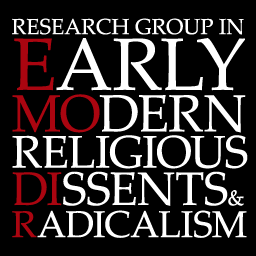10 July 2025
EMoDiR is planning for the upcoming RSA conference in San Francisco (February 19–21, 2026), a series of panels analyzing the concept of the devil in the context of religious dissent.

EMoDiR is an international research group focusing on the history of religious dissent, radicalism, and minorities in early modern times (emodir.net). Since 2011, the group has organized panels at the RSA annual conferences on practices and conceptual frameworks of religious conflict, heresy, and groups of radical dissent. The panels are characterized by a multiplicity of methodological and theoretical approaches.
EMoDiR is now planning for the upcoming RSA conference in San Francisco (February 19–21, 2026), a series of panels analyzing the concept of the devil in the context of religious dissent. The significance of discourses surrounding the devil in understanding early modern practices of resistance and subversion is both deep and wide-ranging. Far from being marginal or purely theological, these discourses served as powerful frameworks through which early modern individuals and communities articulated dissent, negotiated power, and explored the limits of orthodoxy. The figure of the devil – simultaneously feared, condemned, and obsessively discussed – became a vehicle for confronting anxieties about authority, transgression, and the unknown.
Such discourses played a central role in theological and philosophical debates on the nature of evil and the human condition. Discussions of demonic agency allowed thinkers to probe fundamental questions about sin, free will, and divine justice. At the same time, they fed into broader epistemological reflections on the significance of the nature of vice and the boundaries between good and evil. Equally important were the tensions between actual or imagined practices of demonic worship and their condemnation. Whether in the form of witchcraft trials, popular rumors, or polemics, allegations of diabolical pacts often reflected deeper societal conflicts over gender roles, sexuality, social marginality, and religious nonconformity. Finally, diabolical imagery served as a powerful tool to undermine religious and political rulers, criticize ecclesiastical corruption, or frame rebellion. By examining, on the one hand, the ways in which the devil was identified and, on the other, the implications of demonization as a process of othering, we aim at clarifying the place the “devil” held in the context of early modern politics, religious polemics, visual and material culture, daily communal life, and personal devotion and beliefs.
Go here to read more about the call and how to submit short paper proposals.